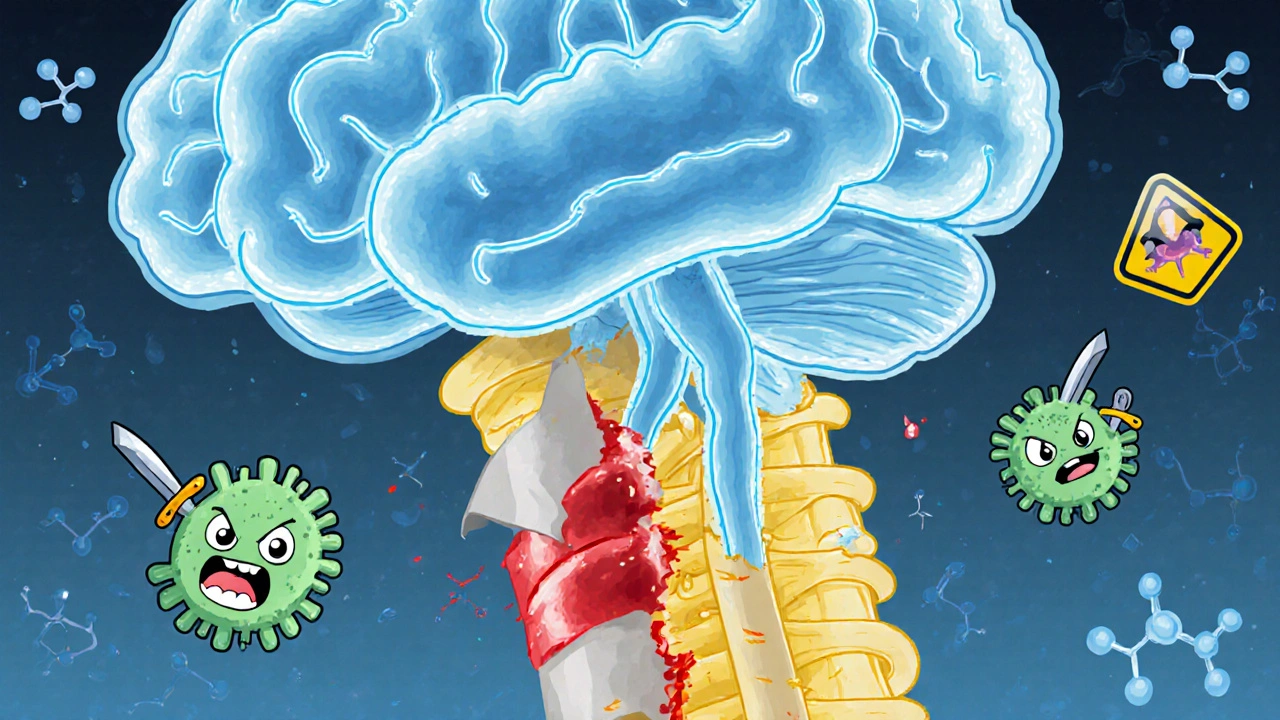Multiple Sclerosis: What to Watch For and How to Manage It
Multiple sclerosis (MS) is a disease where the immune system attacks the protective covering of nerves. That can cause a wide range of symptoms — from numbness and vision changes to fatigue and balance problems. MS looks different for everyone, so knowing common signs and having a plan helps you act fast and get the right care.
Recognize symptoms and how MS is diagnosed
Early signs often include blurred or double vision, tingling or numbness in arms or legs, weakness, and sudden fatigue. You might notice coordination issues, trouble walking, or bladder changes. If you see new neurologic symptoms that last more than 24–48 hours, see a doctor.
Neurologists use a mix of tools to diagnose MS: MRI scans to spot lesions in the brain or spinal cord, spinal fluid tests (lumbar puncture) to check for inflammation markers, and simple neurologic exams. Diagnosis is about patterns — symptoms separated by time and location in the nervous system.
Treatment options and everyday tips
Treatment goals are to control relapses, slow disease progression, and manage symptoms. For relapses, short courses of corticosteroids are common to reduce inflammation quickly. Disease-modifying therapies (DMTs) — like interferons, glatiramer acetate, fingolimod, and newer monoclonal antibodies such as ocrelizumab — aim to lower relapse rates and protect the nervous system. Your neurologist will pick a DMT based on your type of MS, test results, and lifestyle.
Symptom control matters every day. Physical therapy helps with mobility and balance. Occupational therapists can suggest tools or home changes to keep you independent. For fatigue, pacing activities, regular light exercise, and good sleep help more than you might expect. If bladder or bowel issues occur, treatments and behavioral strategies are available. Mental health matters too — mood changes are common and deserve care.
Vitamin D levels can affect MS activity for some people; many doctors check and correct low levels. Smoking raises risk of worse outcomes, so quitting is one of the most helpful steps you can take. If you’re planning pregnancy, talk to your neurologist — many DMTs need planning around conception but pregnancy itself often reduces relapse risk.
When choosing medications, use licensed pharmacies and follow prescriptions closely. If cost or access is a problem, talk to your provider or pharmacist about alternatives and support programs. Keep a symptom diary, bring it to appointments, and ask clear questions: What does this drug aim to do? What side effects should I watch for? How will we measure progress?
MS doesn’t define you. With the right care team, practical routines, and thoughtful choices about medications and lifestyle, many people with MS lead active, full lives. If you notice new symptoms or want to review your treatment, make an appointment with a neurologist experienced in MS care.
Multiple Sclerosis: How the Immune System Attacks the Nervous System
Multiple sclerosis is an autoimmune disease where the immune system attacks myelin in the brain and spinal cord, causing nerve damage and symptoms like fatigue, vision loss, and numbness. Learn how it works, who’s at risk, and what treatments are changing lives.
MoreGabapentin for Multiple Sclerosis: What You Need to Know
In my latest blog post, I delve into the use of Gabapentin for managing Multiple Sclerosis symptoms. Gabapentin, originally designed as an anti-seizure medication, has shown promise in helping to alleviate nerve pain that many MS patients experience. While it's not a cure, it may offer some relief and improve quality of life. However, like all drugs, it has potential side effects that should be weighed against its benefits. Always remember, it's vital to discuss any new treatment with your healthcare provider.
More

